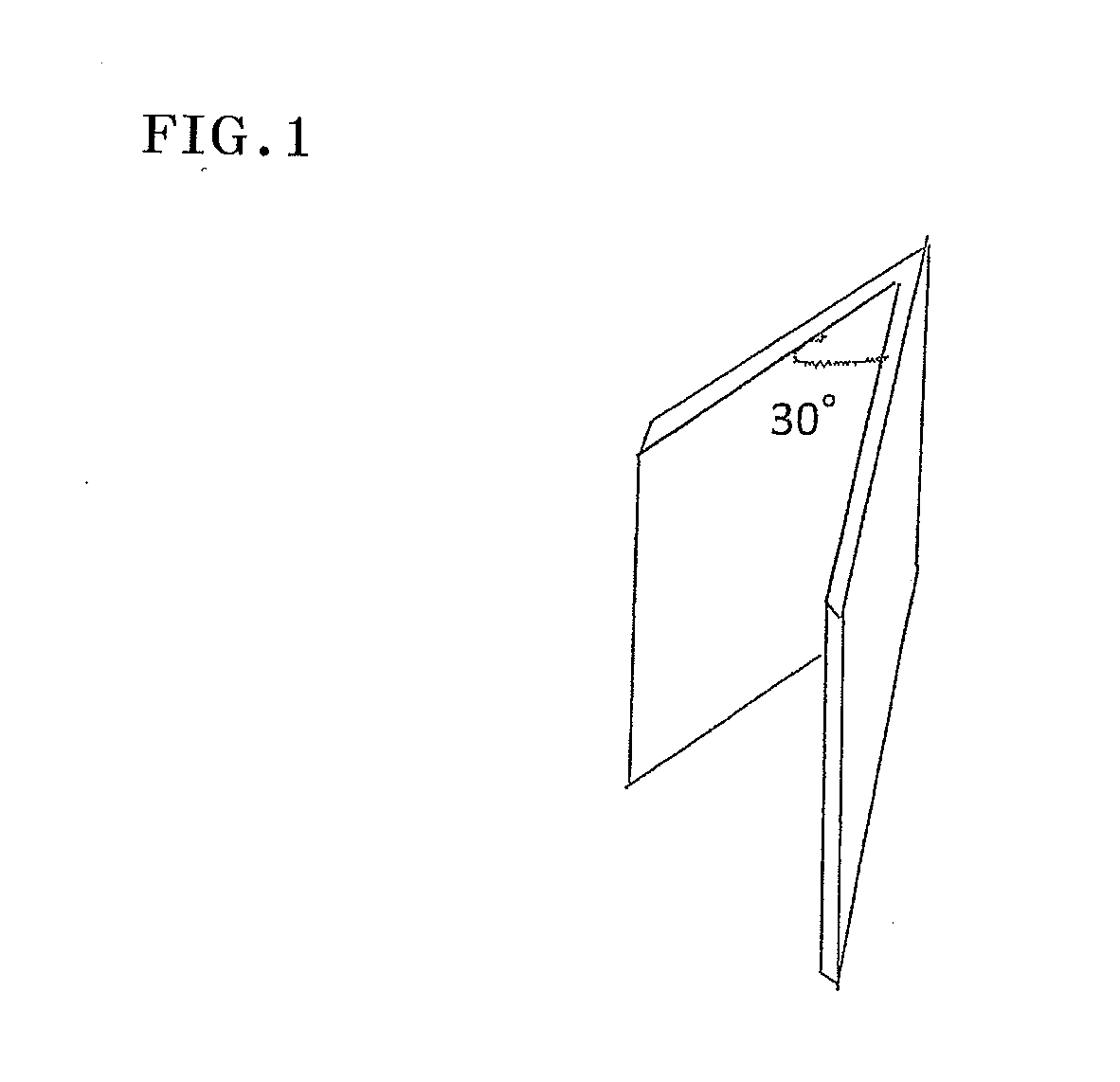Electrically insulating resin sheet
a technology of insulating resin and resin sheet, which is applied in the direction of synthetic resin layered products, turning machine accessories, metal-working apparatuses, etc., can solve the problems of difficult attachment of insulating film to the object, the shape of the insulating film cannot be maintained after removal of external force, and the insulating film cannot be easily and accurately attached to the object. , to achieve the effect of excellent heat resistance and insulating properties
- Summary
- Abstract
- Description
- Claims
- Application Information
AI Technical Summary
Benefits of technology
Problems solved by technology
Method used
Image
Examples
example 1
[0090]To a 1000 ml four-necked flask was added 667.7 g of N-methyl-2-pyrrolidone (NMP), and the flask was heated to 70° C. Then, 250 g of a polyetherimide (PEI) resin (manufactured by SABIC Innovative Plastics, Ultem 1000, glass transition temperature: 223° C., tensile stress at break: 117 MPa, tensile modulus: 3138 MPa) was added thereto and the mixture was stirred for 5 hours to obtain a PEI resin solution.
[0091]Thirty parts by weight of polypropylene glycol having a weight average molecular weight of 400 per 100 parts by weight of the PEI resin was added to the prepared PEI resin solution, and the mixture was stirred to obtain a homogeneous clear solution. The homogeneous clear solution was applied onto a PET film by the comma direct manner and then the NMP was removed by evaporation under heating at 130° C. for 8 minutes to obtain a phase-separated structure. The obtained phase-separated structure was placed in a 30 L-pressure resistant vessel and carbon dioxide was injected the...
example 2
[0092]An electrically insulating resin sheet was prepared in the same manner as in Example 1 except that 60 parts by weight of polypropylene glycol having a weight average molecular weight of 400 per 100 parts by weight of the PEI resin was added to the prepared PEI resin solution.
example 3
[0093]To a 1000 ml four-necked flask was added 667.7 g of N-methyl-2-pyrrolidone (NMP), and the flask was heated to 70° C. Then, 250 g of a polyethersulfone (PES) resin (manufactured by BASF, E2010, glass transition temperature: 225° C., tensile stress at break: 68 MPa, tensile modulus: 2282 MPa) was added thereto and the mixture was stirred for 5 hours to obtain a PES resin solution.
[0094]Thirty-five parts by weight of polypropylene glycol having a weight average molecular weight of 400 per 100 parts by weight of the PES resin was added to the prepared PES resin solution, and the mixture was stirred to obtain a homogeneous clear solution. Then an electrically insulating resin sheet was prepared in the same manner as in Example 1.
PUM
| Property | Measurement | Unit |
|---|---|---|
| porosity | aaaaa | aaaaa |
| porosity | aaaaa | aaaaa |
| porosity | aaaaa | aaaaa |
Abstract
Description
Claims
Application Information
 Login to View More
Login to View More - R&D
- Intellectual Property
- Life Sciences
- Materials
- Tech Scout
- Unparalleled Data Quality
- Higher Quality Content
- 60% Fewer Hallucinations
Browse by: Latest US Patents, China's latest patents, Technical Efficacy Thesaurus, Application Domain, Technology Topic, Popular Technical Reports.
© 2025 PatSnap. All rights reserved.Legal|Privacy policy|Modern Slavery Act Transparency Statement|Sitemap|About US| Contact US: help@patsnap.com


